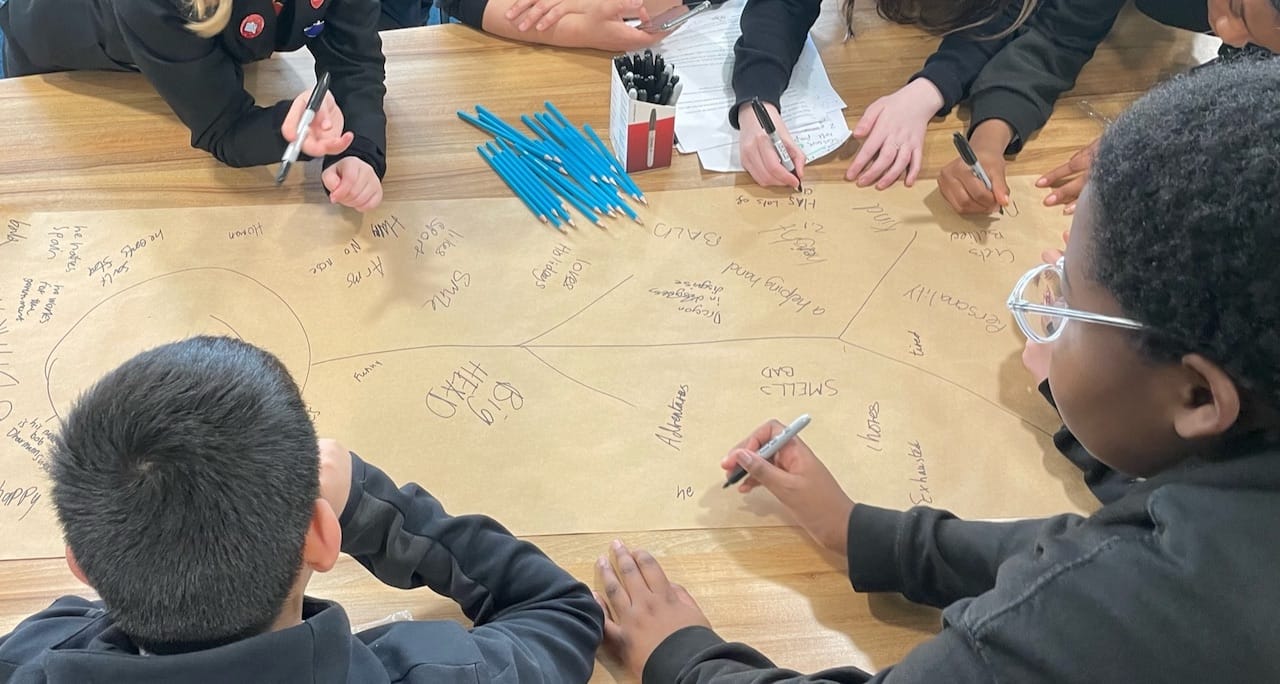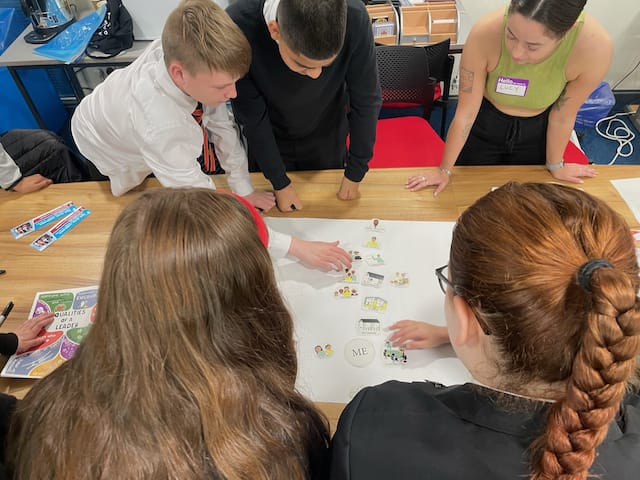
Play Sufficiency Assessment
Play is crucial to young people's wellbeing & development, and each young person interprets the word 'play' differently. Knowing the different ways young people understand play is essential in order to ensure opportunities for play in the city are of good quality, are provided in enough places and are safe and accessible. By asking young people what they would like to see and how they would like to be involved in decision-making, we can establish a platform to communicate with each other and deliver services that benefit young people moving forward.
In May 2023 regulations were approved which require planning authorities to evaluate and enhance local play. Glasgow City Council have previously tried to capture this information using traditional and existing methods of communication which had a low response rate. With the new regulations introduced in 2023, Glasgow City Council had to find a new way to engage with young people successfully.
To support the required engagement, the Centre for Civic Innovation were approached by colleagues in Planning and Development to co-create and facilitate an engagement model which connected with young people in a way that hadn’t been achieved nationally and provided an opportunity for as many young people as possible to share their experiences.
Having previously worked on a collaborative project with The Village Storytelling Centre, to Include Young People's Voices, Glasgow City Council saw this as a great opportunity for the Centre for Civic to continue understanding how young people want to be involved in decision-making by designing the pilot of the Play Sufficiency Assessment.
The Centre for Civic Innovation worked with secondary schools in Glasgow to understand how young people define play and how this could be improved on in the future. Using a design-led process we decided to look at ways to get young people to participate in the process by working with pupils at St Paul's Secondary in Pollok, we had a previous working relationship with the school in a project to hear how the pupils felt about their area.
Having used a design-led process with classes before, we were able to build on methods from Including Young People's Voices by letting young people lead the design process with the foresight that this would encourage school pupils from across the city to engage and give us a better understanding of play sufficiency in Glasgow.

Designing the Play Sufficiency Assessment
Our approach for the Play Sufficiency Assessment was to conduct a citywide engagement. This allowed us to examine differences across the city and obtain an accurate snapshot of play experiences in each ward. Our goal was to ensure equal access to quality play opportunities for all young people, considering accessibility, quantity and quality.
Taking forward all the learnings and insight we built from the Including Young People’s Voices project, the PSA gave the young people an exciting and tangible opportunity to use their voices to shape overall engagement model going forward for young people across Glasgow.
In order to shape the pilot, we hosted 10 design-led workshops across a 10-week period using a range of methods. We co-designed the model of engagement, with the workshops each week themselves being designed by the young people. Following this, we used weekly evaluation of methods and built an insight bank to continue adjusting the engagement methods that are on the terms of the young people but is also impactful for Glasgow City Council.
The workshops explored young people living in Glasgow’s identity, their influence and their involvement currently and how this could be improved moving forward. Taking the necessary time to run these workshops was identified as valuable based on the learnings we took from the Including Young People’s Voices, proving for an effective engagement.
We were working with tight deadlines therefore organisation was key to ensure that we reached the level of engagement which would be beneficial for Planning and Development and empowering young people by shaping a sustainable approach moving forward.
This was achieved by employing a combination of applied storytelling and design thinking methods, which we used to explore the different ways young people could share their thoughts and feelings. Ultimately, this resulted in the creation of an interactive survey, where the wording and visuals were shaped by the young people with the guidance of Heather. This ensured that the content was relevant and relatable to the demographic participating in the survey designed for the initial pilot with St. Paul’s High School but could also be rolled out on a larger scale.
Kicking off on a smaller scale
Initially, we worked on a small scale rather than going city-wide immediately. We tested the initial questionnaire with all the year groups at St. Paul’s to get a wider perspective on the methods co-designed across ten weeks. This allowed us to identify any gaps or issues before scaling up. By working on a smaller scale at the beginning of the project, we can develop different prototypes quickly and gather qualitative feedback, helping us to create a meaningful piece of work for those who have helped us to design the process, for people within the neighbourhood we have tested in and can be scaled up across the city with adjustments.
After refining the process, the PSA pilot was rolled out to 18 High Schools across Glasgow, we received responses from 5140 pupils, which equates to 17% in the city. We saw an increased response rate of 1714% from the traditionally used methods, adding more value to the process of designing with the demographic participating in the Play Sufficiency Assessment.
By rolling out in 18 schools we had various perspectives to review the feedback from. We could look at the individual schools to understand the specific needs of the young people there, we could take a step back and look at different schools in the same area as the city to identify similarities & differences and we could look at this with a city-wide lens to pick up on trends that appear across the city.
High level insights...
Upon reviewing the pilot, we found that young people between S1-S3 are generally more optimistic about their space opportunities, but this optimism decreases with age. While S1-S2 pupils agree that there is plenty to do in their areas, older pupils feel there are fewer activities available to them. We also understood that according to those who participated, the quality of existing spaces is a greater barrier to play than the quantity of spaces. We also discovered that cleanliness is the highest priority for improvement among young people, with older age groups particularly dissatisfied with cleanliness.
The main barriers to play are not the lack of spaces, but rather the presence of others in those spaces, which makes young people feel unsafe. Despite this, most young people find it relatively easy to access local areas. The time of day, influenced by lighting, significantly impacts space usage, with a preference for better lighting in sporting facilities and parks. Additionally, weather, especially in winter, is a major barrier, prompting a need for more sheltered outdoor spaces.

Impact and recognition
Through the insights gathered in the various reports, the Centre for Civic Innovation has co-designed a new decision-making process with substantial input from young people across the city. By working in this way, Glasgow City Council can make more informed decisions to improve health & well-being for young people in the city. We can also establish a partnership with the young people of Glasgow where their voices are heard and decisions are made with them using design-led methods. By developing a consistent way of engaging with young people and scaling this up across the city, current and future high school pupils in Glasgow, can play an active role in creating a Glasgow where everyone can benefit.
Our work on the pilot of the Play Sufficiency Assessment was recognised as the overall winner for Scotland in 2024.
This would not have been possible without our collaborators from St Paul's Secondary School, our colleagues within Planning & Development within Glasgow City Council and the Village Storytelling Centre.
Next steps
The Centre for Civic Innovation will continue to evaluate the first round of the Play Sufficiency Assessment by working with Education Services and Glasgow City Council, taking a deeper look at the insights gathered and use them to inform how we can better include young people's voices in decision-making and build a culture where they feel informed and empowered to create a better Glasgow where everyone can benefit.
Another exciting development as a direct result of this work will be opportunity to co-design places and spaces with young people in the city in collaboration with our colleagues in Planning and Development.
If the council asked me a question, I would feel empowered knowing my opinion matters.